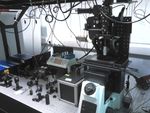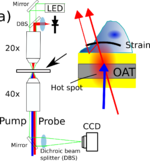Difference between revisions of "Cell Imaging Using Picosecond Ultrasonics"
(→Instrument) |
(→Substrate Design) |
||
| Line 34: | Line 34: | ||
|} | |} | ||
| − | + | The cells are grown on a transducer substrate similar to those described [[Nanoscale_Ultrasonic_Transducers|here]]. The optimization of the transducer layer is different in this case. Here we are much more concerned with optimizing the optical properties of the transducers. The goal is to reduce the amount of blue light reaching the cell and either maximize the reflected or transmitted light, depending on the experiment requirements. We still have to ensure that the acoustic performance of the transducer is correct and that the acoustic bandwidth is sufficient to generate waves in the Brillouin frequency range of the sample. | |
| − | |||
| − | |||
<br style="clear:both" /> | <br style="clear:both" /> | ||
Revision as of 13:41, 18 October 2013
Contents
Motivation
Instrument
Measurements are made using a pump/probe picosecond laser ultrasound instrument utilizing ASOPS lasers. These laser control the delay between the pulse electronically removing the need to mechanically scan a delay line. this allows the very small signals present in these typos of experiments to be obtained quickly.
The pump beam is frequency doubled in a non linear crystal to have a wavelength of 390nm, the probe beam is at 790nm and both beams can be directed to the sample through and objective lens normal to the sample. optionally the pump beam can also be directed to the underside of the sample to generate the acoustic waves from below.
The instrument also has optical paths for wide field phase contrast imaging to allow the cells being studied to be visualized. This allows to assess the cells health and locate the scan region and register the acoustic image with the cell of interest.
The acoustic signals are captured by recording the probe beam power with a photo-diode, this signal is then filtered and amplified before being digitized in a digital oscilloscope. To build up an image the sample is raster scanned.
Detection mechanism - Brillouin Oscillations
The probe light is reflected from the sample surface to the detector, and if the sample is transparent there is also a reflection from the acoustic wave packet traveling in the sample. This happens because the acoustic wave causes a change in the local refractive index and so acts as a weak mirror. These reflections interfere at the detector and as the phase of the reflection from the acoustic wave is changing with time it leads to an oscillating signal. These oscillations are termed Brillouin Oscillations.
The frequency F of the oscillation is given by the simple equation: F = 2*Va*n/λ
So if we can measure this signal we can measure the acoustic velocity Va, as long as we know the laser wavelength λ and the refractive index n.
Substrate Design
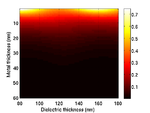 |
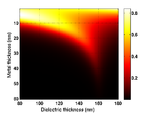
|
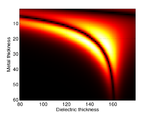 |
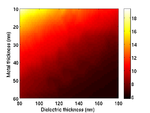
|
The cells are grown on a transducer substrate similar to those described here. The optimization of the transducer layer is different in this case. Here we are much more concerned with optimizing the optical properties of the transducers. The goal is to reduce the amount of blue light reaching the cell and either maximize the reflected or transmitted light, depending on the experiment requirements. We still have to ensure that the acoustic performance of the transducer is correct and that the acoustic bandwidth is sufficient to generate waves in the Brillouin frequency range of the sample.
Example results
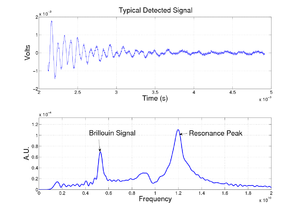
|
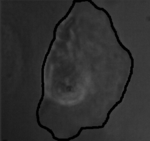 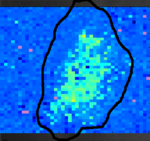
|
Publications and Talks
IOP
LU2013
